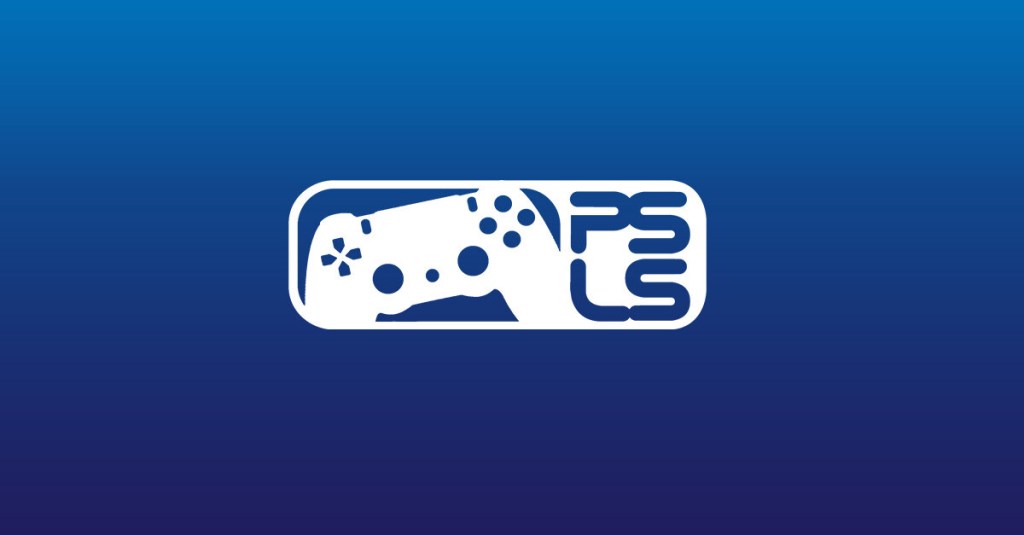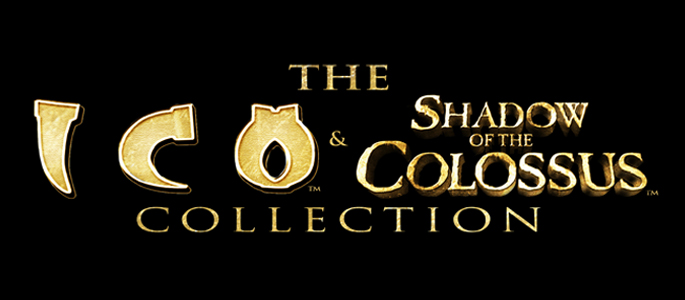
Welcome to the world we all asked for. Two years ago when the HD God of War collection was announced, reactions were split between excitement for an old title making a reappearance with updated visuals, trophy support and bonus features, and dismay for an easy cash-in by developers on games many of us already own. Fast forward to the present where remastered HD collections have proven to be a profitable option. Tomb Raider, Silent Hill, Prince of Persia, Sly Cooper and even Splinter Cell have all received the makeover, but at what cost? With Team ICO releasing their HD collection of the PS2 titles ICO and Shadow of the Colossus, we are forced to ask ourselves, “Which titles deserve to be re-released?” Why should I re-purchase a game I already own? Or maybe we should cut to the chase and ask: What defines a classic?
ICO launched in 2001 with the PlayStation 2 and has since been credited as a “cult classic” for its widely ignored presence, physical rarity and audience of devout followers. At the time, those who played ICO often talked of its unique gameplay and gorgeous visuals. The simplicity of the title became its charm; there are no menus, practically no dialogue, options or directions right from the start. Instead, you follow along the path the story sets.
You play as ICO, a child exiled by his village for being born with horns. The custom of this village is to banish these children inside of a stone tomb in this far away castle. After they lock him up and set back along the path towards the town, the walls begin to tremble, the tomb topples over and ICO escapes. You set off through the castle searching desperately for a way home until you encounter Yorda, a mysterious girl whom you vow to protect up until you both make it to safety.
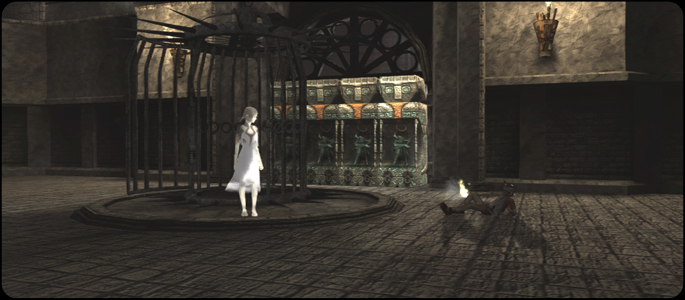
As a genre and style, ICO plays as a large escort mission. You’ll make your way through various rooms of the castle, tasked with clearing paths by opening alternate doors, moving bridges, and using objects in the environment to create safe ways for Yorda to reach the next area. Coming from two different worlds, Yorda and ICO’s interaction is limited to hand signals and brief yells for attention. Yell for Yorda and she will come closer to you, or extend a hand over a gap and she will jump to your grasp. More often though, you will end up holding her hand (literally) and dragging her through corridors to a door or a specific endpoint. Your path soon becomes blocked by shadow creatures emerging from the ground who seek to claim Yorda while paying ICO very little attention, until he gets in the way of their goal. These are the real enemies of the game, and unless you defeat them with accuracy and swiftness, they drag Yorda into the darkness, creating an all encompassing black void that gives you an instant game over.
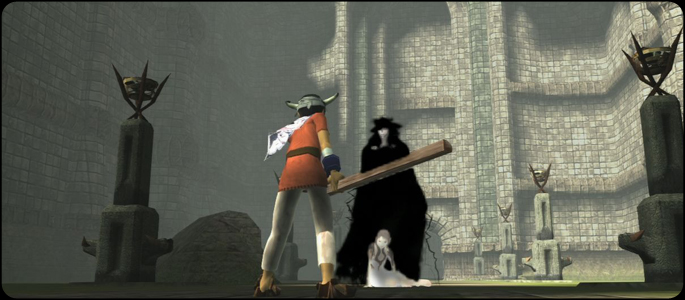
Each room contains obstacles and puzzles that utilize fire, bombs, levers or blocks to be solved. Some of these puzzles can be quite challenging with very little indication set by the game on what you may interact with, and what ICO can do. As you make your way through the castle and become acquainted with your tools and abilities, these puzzles become more manageable, especially as you retread familiar rooms that may contain new challenges. Expect this growing confidence to be tested when the game suddenly demands you to brave a large timed puzzle, often requiring Yorda’s assistance to complete, while protecting Yorda from being pulled into a shadowy grave. Her presence will seem like that anchor weighing your quest for freedom down, or that extra challenge that lights the fire under you. One thing is certain, the character AI exhibited by Yorda in this 2001 game performs better than many of the co-op AI of the current gen.
Not everything stands up to that test of time though; by today’s standards, ICO is incomplete, short and bare bones. There are no NPC’s to talk to, no optional missions or upgradeable RPG elements. Your first playthrough will take 6-7 hours, and there’s even a trophy to reward those who can make it through in less than 2. The title is bare. Naked on a shelf next to a library of titles that scream for attention and push the limits in places other games haven’t dared traverse.
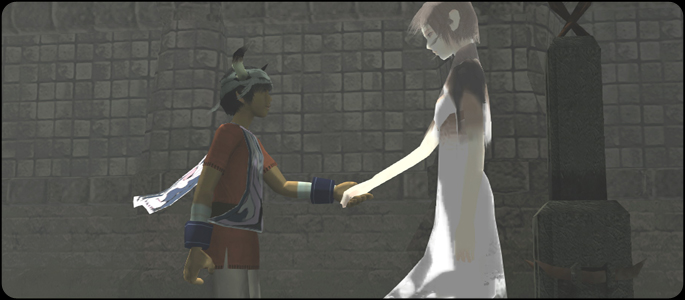
But it’s within this simplicity that ICO stands alone. The boundaries ICO pushes are in directions other games wouldn’t even consider traversing. The simplicity is a refreshing break from mandatory backtracking, power leveling and monotonous side-quests embedded with a hidden goal of lengthening play time. You enter the world as this boy does; confused, lost in a temple without direction or help. There is no tutorial or narrative to get you on your feet. For the next few hours, you are ICO. Learn as you go, experiment, survive.
Shadow of the Colossus Review >>
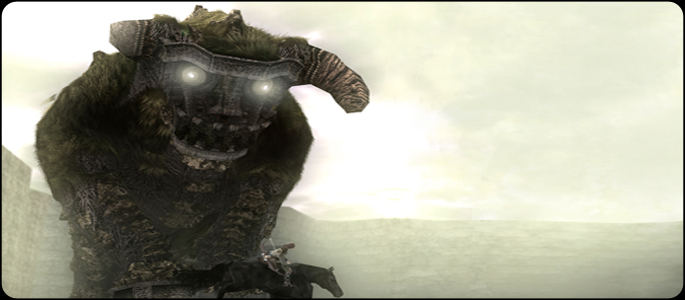
Shadow of the Colossus seems to pick up, in spirit, right where ICO leaves off. We’re in a new world with a different story and set of characters, however the feel and tone that ICO set- the barrenness of your surroundings, the silent emotional pull you experience, and the extreme isolation with overwhelming odds carries over without a hitch. The title opens with Wander, your protagonist, riding through the woods on his horse holding a stilled body. His long journey leads him over an expansive bridge to a forbidden temple, long deserted. Walking through its stone gallery, he approaches the altar and places the body, a girl, across it. Proving his worth with an ancient sword, Wander makes a deal with Dormin, the Gods of this land, that her soul will be restored if he can slay 16 Colossi that roam the lands.
Set off across the fields on Agro, your horse, and follow the light your sword emits to reach your foe. You’ll travel through some beautiful scenery full of harsh passageways, but reach your destination and the screen will ‘letter box’ and the camera will pan in the direction of an enormous Colossus. Once you spark its attention, be prepared for an intense battle that will only end with one of your deaths. To kill the Colossi before they kill you, you must discover where they hide their weak spot noted as a glowing glyph when you wield your sword. Finding it is only your first task though, reaching it and using it against them is where the challenge lies. More often than not, the size of each beast will require you to climb up its body, either by literally scaling it, or by tricking it into presenting you with an alternative path.
Imagine for a second the challenge in climbing a living, moving giant who is fighting you every step of the way. Upon reaching his crown, imagine the adrenaline coursing through your veins as you slay him without being thrown when he rears in pain, or crushed in its attempts to defend itself: The game presents this feeling unlike any other. Toppling a giant the size of the Statue of Liberty feels great, and in a world where oversized enemies have become something of a norm in video games, its authenticity is unmatched. The sheer scale and physics of a battle feels real, as movement and balance on top of a living, moving mountain leads to Wander being tossed around like a ragdoll. Your limited stamina means your grip on the back of the Colossus will run out unless you reach its glyph with haste, or take advantage of their brief moments of rest to catch your breath.
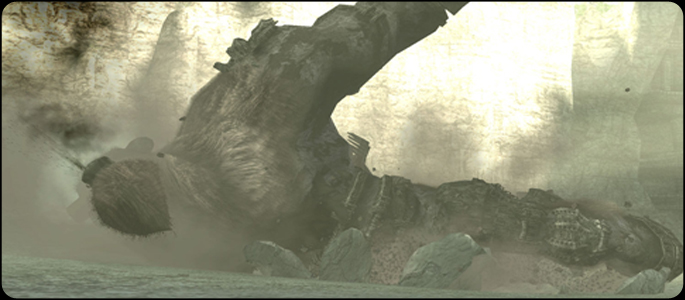
Gone are the temples of traditional quest games. In fact, reminiscent to its predecessor, the entire land is barren of any kind of distraction from your main goal. Instead, each Colossus is the temple; the winding corridors and booby-traps of old are instead baby steps to dodging and working your way up the Colossi’s body. That locked door you search endlessly for an answer to is instead you feelings of helplessness and dread against a far superior foe. Your craftiness is not put to test on a cold, inanimate dead end corridor, but rather on how you can kill a flying Colossi in mid-air while you’re stuck on the ground with a bow and arrow. Each of the 16 Colossi represent different types of strengths, animal or element types, so no two will be brought down the same, and while they have strength and size on their side, your creativity becomes your greatest advantage. Don’t worry- taking out a Colossus will reward your every ounce of frustration and struggle with a deep, real sense of accomplishment.
The story strikes the same chords as its predecessor and pushes you on to see Mono revived. Emotional journeys like these always feel flat and uncaring when conveyed through black and white text on a screen. Trust us though that the ending will leave you torn, not due to the events, but with how attached you will have grown to a game so limited in traditional narratives. Shadow of the Colossus is something to behold. It redefines epic, while honoring its past.
The re-release of these two games stays entirely true to the original titles’ feel; the difference with the new version falls almost entirely in the visual upgrade. While both were praised in their original release for how detailed and gorgeous their scenery and landscape shots were, they now present a sharpness and polish to back it up. For extra content, the collection also comes with two dynamic themes for you XMB, and a handful of videos on the past and creation of the two games, including one of an informal talk between the games’ producers and Fumito Ueda, the Creative Director. For anyone looking to get better glimpse into the history of the these games and the minds of those so close to it, there’s no better place to start. Of the memorable moments in the video, one involves Fumito Ueda discussing the birth of Shadow of the Colossus as their collective desire during tradition boss battles to just climb up them and stab them until they fell. “So we made a game like that,” said Ueda.
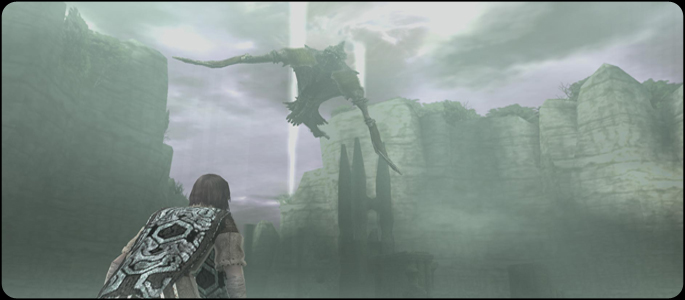
A collection that packs a few games on a disc and slaps a new polish on it would never succeed unless there were significant meaning behind it. The ICO and SotC collection is a way to welcome a whole new generation of gamers to two titles that redefined gaming in ways many do not realize. Team ICO’s works shaped the atmosphere, story presentation, audio ambiance, and visual art styles on some of the most renowned games to follow them. ICO left a profound impression on game designers like Eiji Aonuma and Hideo Kojima, who have spoken of its strong influence on the final look of their titles, like Legend of Zelda: Twilight Princess, and Metal Gear Solid 3: Snake Eater respectively. Evan Wells, the Co-President of Naughty Dog cited ICO as one of the team’s biggest inspirations. Even Marc Laidlaw, the scriptwriter for Half-Life, commented in an interview that one of the ending scenes involving Yorda and ICO on the bridge was “a significant event not only for that game, but for the art of game design”.
ICO and SotC helped established a trend that video games were more than kill simulators, and children games of bopping enemies on the head; that they could provide a new facet of art previously unimagined. Well respected artists and peoples from other areas of creative design began to step forward to defend video games from the onslaught of controversy violent video games heralded. Film director Guillermo del Toro has always spoke in favor of video games as an art form, and even cited both of Team ICO’s games as “masterpieces” and influences on his style.
However, it’s not just the art and style that make these games so iconic, the underdog story behind the studio has provided the encouragement for many indie development teams out there. ICO was born from the minds of a few, and was given an opportunity on the PS2 despite its unconventional style. Even with it being a commercial disaster in sales, SCEJ backed them in their desires for a second adventure, and with a heightened marketing campaign in the US, Shadow of the Colossus sold enough to put it on the console’s greatest hit’s list.
It is almost impossible for a game so cherished and beloved from our past to hold up to today’s standards. Often we find those things we felt so fondly for have become outdated with new techniques or styles, or that the features touted were just fads of the time, now replaced with the next greatest installment. Unfortunately, the collection does show the games’ age – camera angles can be a real pain, and a lack of autosaves can spoil the experience, making you wish the games had been left in the past. Additionally, the HD upgrade is far from perfect, and the visuals don’t seem to have been upgraded as much as as in other re-makes like the GOW one.
Nevertheless, ICO and Shadow of the Colossus are two rare titles that can withstand the yearly tides and outperform all, because they still, to this day, offer an experience that most games overlook: limited but strong storytelling with a small cast, a deafening silence until a cutscene or battle explodes, and gameplay that mostly feels fresh – only to be held back by the lack of a few modern upgrades.
PlayStation LifeStyle’s Final Score
+ Experiences you won’t find in any other game – Lack of autosave and poor camera angles make the game feel dated |
 |
–
